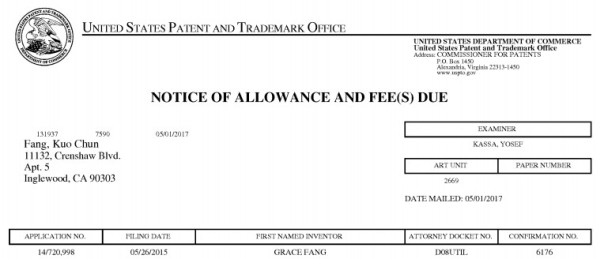Patent pools have a long history. One of the first patent pools was formed in 1856 for sewing machines. Nowadays, patent pools frequently represent the basis for industry standards that supply firms with necessary technologies to develop compatible products and services, for example in the field of mobile communications, information coding, public health etc. They may concern technologies that are yet to be fully developed.
Sections 68 and 69 of the Patents Act, of 1970 provide for licensing and assignment of a patent by embodying the terms and conditions to make such transmission legally valid. Further, these sections create a way for patent pooling and cross-licensing between different patent holders or third parties for the creation of a pool. A cross-licensing contract between the two parties is an agreement where they grant patent licenses to each other. Such agreements involve the exchange of essential patented knowledge between two parties who are seeking to further own their technological progress. For example, Intel Inc. has several cross-licensing agreements with Advance Micro Devices Inc. (AMD).
PATENT POOL
A patent pool is an agreement between two or more patent owners to aggregate one or more of their patents for the objective of cross-licensing to third parties. The Patents Act, of 1970 does not restrain the creation of patent pools, although, under S.102 enables the creation of patent pools in the interest of the public, which is to be regulated by the government.
Example– Open Invention Network (OIN) is a patent pool for the developing and sharing the Linux Operating System software among several industries.
ADVANTAGES OF PATENT POOLS
The creation of a patent pool aims to make patent licensing accessible and to incentivize innovation. A patent pool differs from a multi-cross-licensing agreement, as in a patent pool a third party who is unable to contribute to the innovation, can still derive benefits from the pool by being a member. However, in cross-licensing agreements, only the party to the agreement is entitled to its benefits.
- Patent pools are effective in the technology landscape where the technology is complex and multi-faced as it brings together different parts of technologies to come to a superior technical solution.
Example– Aurobindo Pharma Limited and MedChem, an Indian drug manufacturing company, have joined the Medicines Patent Pool, for extending their manufacturing of medicine for the treatment of HIV/AIDS.
- These pools reduce the cost and the time that is needed to invest in the licensing process.
- They are a useful tool for bringing technology to market more quickly, efficiently and fairly, and generally at a better overall price for licensees.
- Patent pools have a significant economical aspect as by sharing patented technology, the companies save the time and money required for inventing the technology.
- The main advantage of a patent pool is that it serves as one place wherein interested third parties can obtain licenses and collect all the required patents rather than obtaining licenses from various patent owners individually.
DISADVANTAGES
- Patent pools cannot work effectively without the support and participation of all the key patent holders. The pool participants may agree on cross-licensing freely but any patent holder outside the pool can sabotage the pool and this might lead to the inefficacy of the pool.
- Forming a patent pool is a costly affair. As well as it is difficult to gather all the IP owners under one umbrella of the patent pool and agree on them the details of it. There might be difficulty in aligning the strategic interest of all the owners.
- The patent pool holds a monopoly in the market over the patents and domestic manufacture’s suffer because of it. As the patent pool is the only source for the license rights, the manufacturing third parties are left with no choice other than to negotiate for higher royalties. This acts as a barrier for new entrants in the market who are not part of the pool, they cannot enter the foreign market without paying royalties.
- Sometimes third parties do not have a choice but to implement the technology wherein they may have little or no power to negotiate for the royalty due to a lack of alternatives than to use that technology. This defeats the purpose of the patent pool.
CROSS LICENSING
A cross-licensing agreement is a contract between not less than two parties that grant mutual rights to the party’s either patent or any other intellectual property. This agreement can be either private involving specific companies or a public agreement like a patent pool wherein the IP management is between a large group of patent holders who share patents.
Some examples of IP cross-licensing include
- Google and Samsung Electronics- In January 2014 they entered into a cross-licensing agreement for the patents filed in the next 10 years involving existing patents. The agreement strengthens the ties between the owner of Android OS and the world’s largest smartphone manufacturer then.
- Some well-known industry-specific patent pools are MPEG-2, DVD and RFID.
- The Medicines Patent Pool (MPP) is a United Nations-backed public health organization working to increase access to life-saving medicines for low- and middle-income countries. MPP has earlier dealt with access to HIV drugs, which is important in knowing the importance of patent pooling in health technologies. In March 2020, the MPP expanded its scope to include any health technology that contributes to the global response to Covid-19.
ADVANTAGES OF CROSS-LICENSING
- Cross-licensing of patents offers various advantages to encourage innovation within markets to existing as well as new market players by ensuring mutual sharing of technology to improve the products by decreasing the product development costs.
- It helps in avoiding the hardships of litigation involving infringement claims. Patent pools can reduce or eliminate the need for litigation over patent rights can either be easily settled or avoided through the creation of a patent pool.
- There is a reduction in transaction costs is observed as it eliminates the need to enter into multiple licensing agreements with multiple patent holders as there is one common agreement with one patent pool.
- It helps in granting freedom to parties to explore and exploit opportunities in any field without the fear of litigation or conflicting interest.
Therefore, patent pools and cross-licensing agreements become effective ways to overcome the hurdles of competing technologies needed for a particular technology as participants start creating networks that encourage sharing of technology and information.
DISADVANTAGES OF CROSS-LICENSING
Though cross-licensing is appreciated for its advantages, it also poses a few threats to the market players. For existing members of the industry, the following are the disadvantages:
- It can effectively pave way for imitation of the company’s product by competitors.
- There is a fair share of dependence on the knowledge and skills of the other parties for making progress.
- Sometimes the competitors file infringement suits to arrive at a cross-licensing agreement promoting a culture of unnecessary and cumbersome litigation.
- These agreements promote the formation of cartels when they go unregulated. These kinds of agreements negatively affect the competition as they promote the formation of unregulated cartels by concentrating the technological knowledge on only a few players in the market. Cartels are defined in the Competition Act, of 2002 and the formation of same is prohibited under it too.
When the adverse effects of cross-licensing agreements are not kept in check, it defeats the whole purpose of such an agreement to foster innovation and development of the industry. Therefore, stringent anti-trust legislation must be in place to ensure that such anti-competitive tendencies are addressed and penalised.
CONCLUSION
The patent pool and cross-licensing helps in mutual sharing of knowledge of technological patents and products. Cross-licensing helps in the creation of superior products while ensuring the protection of the patent rights of the parties. However, the popularity of these is on the rise and it is important to ensure that the formation of these patent pools does not lead to any anti-competitive practices, this might lead to defeating the actual purpose of the IP sharing networks. Ultimately, the major challenge is to strike a balance between patent exclusivity and consumer welfare. Everyone benefits from the cross-licensing agreements including the companies themselves, the industry, and the consumers too. It is necessary, however, for anti-trust, anti-collusion regulators, and other patent litigation bodies to be cautious of the larger and broader cross-licensing agreements to ensure healthy competition.



